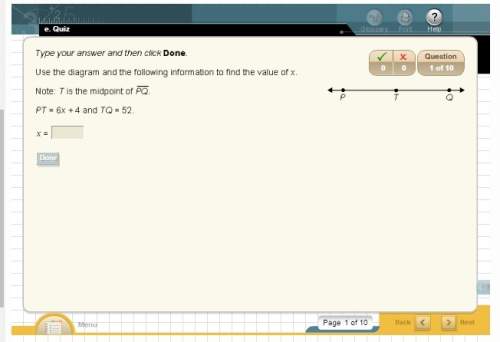
Mathematics, 17.11.2020 03:50 jason9394
In a study, a random sample of 2625 US adults were asked whether they agree or disagree that there is "only one true love for each person." The response and gender of the participants is shown in Table 1.
Male Female Total
Agree 372 363 735
Disagree 807 1005 1812
Don't know 34 44 78
Total 1213 1412 2625
Table 1 Is there only one true love for each person?
(a) Use the information in the table to construct a confidence interval for the difference in the proportion who agree, between males and females, using the fact that the standard error for the difference is .
Round your answers to three decimal places.
The 95% confidence interval is
to
.
(b) Is it plausible that there is no difference between males and females in the proportion who agree that each person has only one true love?

Answers: 2


Another question on Mathematics

Mathematics, 21.06.2019 22:30
Graph the system of inequalities presented here on your own paper, then use your graph to answer the following questions: y > 2x + 3y is less than negative 3 over 2 times x minus 4part a: describe the graph of the system, including shading and the types of lines graphed. provide a description of the solution area. (6 points)part b: is the point (â’4, 6) included in the solution area for the system? justify your answer mathematically. (4 points)
Answers: 1

Mathematics, 21.06.2019 23:00
Match the vocabulary to the proper definition. in probability, two events in which 1. conditional probability the outcome of one event is independent of the outcome of a second event. 2. dependent events in probability, two events in which the outcome of one event is dependent on the outcome of a second event. the probability of an event in which the outcome of the event is conditional on the outcome of one or more different events. 3. independent events
Answers: 2


Mathematics, 22.06.2019 05:20
Customers are used to evaluate preliminary product designs. in the past, 93% of highly successful products received good reviews, 51% of moderately successful products received good reviews, and 14% of poor products received good reviews. in addition, 40% of products have been highly successful, 35% have been moderately successful and 25% have been poor products. round your answers to four decimal places (e.g. 98.) what is the probability that a product attains a good review? (b) if a new design attains a good review, what is the probability that it will be a highly successful product? (c) if a product does not attain a good review, what is the probability that it will be a highly successful product?
Answers: 1
You know the right answer?
In a study, a random sample of 2625 US adults were asked whether they agree or disagree that there i...
Questions

History, 06.07.2019 14:30

History, 06.07.2019 14:30


History, 06.07.2019 14:30


History, 06.07.2019 14:30

History, 06.07.2019 14:30




History, 06.07.2019 14:30

Biology, 06.07.2019 14:30

Biology, 06.07.2019 14:30

English, 06.07.2019 14:30

History, 06.07.2019 14:30


History, 06.07.2019 14:30

History, 06.07.2019 14:30

Biology, 06.07.2019 14:30

Biology, 06.07.2019 14:30




